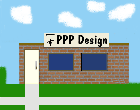Stress Free Roll Out of a New Website
08/29/2024Building a new website can be exciting and stressful. Follow these simple rules and reduce the stress of constructing a new website. The steps are the same whether your site is a corporate or a small business website. The process begins when you meet with your website developer.
Communication is Critical
Your developer should designate a contact person to work with you until your website is complete. A website developer may employ graphic artists, programmers, quality control personnel, or others to help complete your website. There must be clear communication between you and the contact person assigned by the developer. Open communication may determine the success of your project.
Agree on the Design
Agree on the design of your website before construction begins. Be sure to incorporate Your corporate branding and existing logos. Existing customers will feel at home visiting the new site when they see familiar branding. Remember, this is your website. The designer should let you know if a requested design element poses problems with the navigation or execution of the site. Ultimately, the design should be one that you are happy with.
Plan Dynamic Applications
Discuss dynamic areas of your website, such as contact forms, reservation systems, surveys, and more. Be specific about your needs. You don't need to know the coding details, but you should understand your customer's experience when they visit your new site. Reviewing dynamic portions of your site should be completed before work begins. Implementing dynamic applications into a work in progress can be costly.
Agree to Start and Completion
Agree to a start and completion date. Website developers should know how long it takes to create a website. Discuss page content and how it will be processed. Will you and your staff provide the content, and in what format? Set specific deadlines or benchmarks for completion. You must provide the information necessary for prompt completion.
Test and Review
Test and review, test and review! Once the site is complete, it should be tested and reviewed by as many people as possible. Small companies often recruit friends and family to visit and critique the website. Remember, not everyone will love the new look. If the review turns up problem areas, make the necessary changes. Be sure to review all text, grammar, and punctuation. Many people will discount your site if it isn't formatted accurately. The content should be focused on your visitors and avoid regurgitating company policy and philosophy.
Plan Deployment
Once you feel comfortable that the new website is ready for public consumption, plan a deployment time that makes sense for you and your customers. Remember to notify current visitors if you are replacing an existing site. Legacy applications should be considered so current users can prepare for any changes.
Continue Testing
Once your new website is live to the public, ongoing testing is crucial. Changing from a private review to a public display can often highlight problems otherwise undetectable by a review team. Once you are satisfied that the new website is fulfilling its role, don't forget to promote and advertise the new site. The impact of your new website is similar to a ribbon cutting at a new facility.
Follow these simple rules and ensure a relatively stress-free rollout of your new website.

